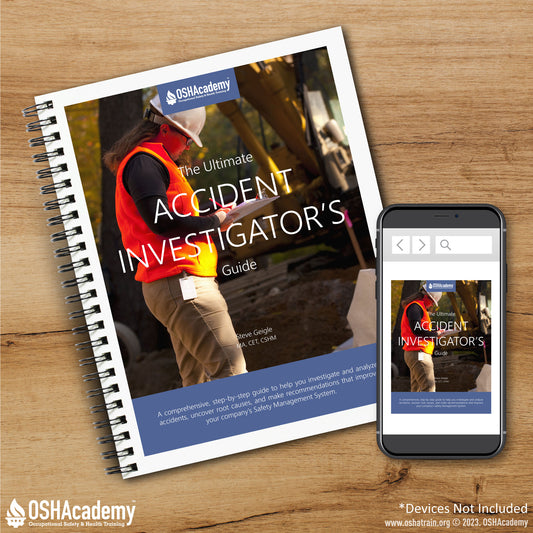
Applied Ethics in Safety: Beyond Compliance, Toward Conscience
Share
By Abbie Geigle
A supervisor faces pressure to meet a critical production deadline, but a crucial machine has a minor yet known defect. Pausing production to address the issue could significantly delay operations. The supervisor wonders, "Is it safe enough to keep running today?"
What would you do?
This ethical dilemma illustrates the complexity faced by supervisors and managers daily. Ethical decision-making was the central focus of "Applied Ethics for Health, Safety, and Environmental Professionals," presented by Dr. Dan Snyder, CSP, CRSP, at the 2025 ASSP SAFETY25 Conference + Expo. Dr. Snyder emphasized the necessity of moral reasoning beyond mere compliance and stressed that true leadership consistently prioritizes ethics—even under pressure.
Asking Deeper Questions
Simply asking "Is it safe?" doesn't fully address the complexities involved. Supervisors and managers should instead reflect deeply:
- Are we genuinely reducing risks or merely avoiding responsibility?
- Are we choosing what is ethically right or conveniently easy?
- Are we prepared to halt production if safety is compromised, despite potential operational disruptions?
Ethics in the Real World
Consider an example: An employee notices a potential hazard but hesitates to speak up due to fear of negative consequences. This fear can create a culture of silence, leaving critical issues unresolved until an incident occurs. Therefore, it's crucial for supervisors to actively foster an environment where "stop work authority" is viewed as a positive, collective responsibility, supported by everyone from frontline workers to upper management.
Ethical decision-making must be integral to operations—not isolated within the safety department. Operational leadership that prioritizes ethical behavior creates a culture of integrity, accountability, and genuine concern for employee welfare.
Common Ethical Dilemmas
Dr. Snyder highlighted several ethical challenges professionals commonly face:
- Falsification or concealment of safety data to avoid delays or costs
- Non-reporting of incidents due to fear of repercussions
- Pressure from economic constraints leading to unsafe shortcuts
- Role conflicts, particularly when transitioning between advisory and operational positions
- Job insecurity influencing decisions and silence on safety concerns
These scenarios are not theoretical; they happen every day and require clear ethical standards to navigate appropriately.
Ten Core Themes of OSH Ethical Conduct
Dr. Snyder proposed ten core themes to guide occupational safety and health (OSH) professionals:
- Integrity and Honesty – Speak truthfully, even when under significant pressure.
- Competence and Professional Development – Know and respect your professional boundaries; continuously seek knowledge and growth.
- Prioritization of Safety and Health – Never compromise safety for expediency or convenience.
- Confidentiality and Privacy – Respect and protect sensitive information unless disclosure is necessary to prevent harm.
- Respect and Fairness – Advocate for dignity, equity, and stand against discrimination.
- Adherence to Laws and Regulations – Report any violations proactively and comply rigorously with relevant laws and standards.
- Ethical Decision-Making – Use thoughtful analysis when managing competing priorities.
- Accountability and Transparency – Admit mistakes openly and communicate risks clearly and responsibly.
- Avoiding Conflicts of Interest – Maintain impartiality to protect public trust.
- Commitment to Public Interest and Welfare – Advocate for safety and ethical integrity, even when inconvenient or unpopular.
Applying Ethical Thinking to the Scenario
Returning to the original dilemma—the machine has a known defect. Continuing production might achieve short-term goals, but at what ethical cost? Several key themes apply directly:
- Integrity and Honesty: Addressing the defect truthfully, even when under pressure to meet a deadline.
- Prioritization of Safety and Health: Never compromising safety for convenience or expediency.
- Accountability and Transparency: Openly acknowledging the risk, clearly communicating potential impacts, and taking responsibility for the solution.
- Commitment to Public Interest and Welfare: Advocating for the safety and welfare of the team, even when inconvenient or unpopular.
From these ethical perspectives, the responsible decision is clear: fix the defect first. Prioritizing ethics over convenience builds trust, ensures long-term organizational sustainability, and protects employee well-being.
Final Thought
Ethics isn't merely an addition to safety—it’s the foundation. When faced with pressures, supervisors and managers should not just ask, "Is it safe?" but rather, "Is it the right thing to do?" Ethical reasoning provides clarity, fostering a culture of integrity, trust, and genuine safety excellence.
About Dr. Dan Snyder Dr. Dan Snyder, CSP, CRSP, is recognized for his expertise in applied ethics and professional growth within occupational safety and health. As CEO of Safety Mentor, LLC, and author of "Logos, Ethos, Pathos: Influencing Ethical Practice in Occupational Safety and Health," Dr. Snyder provides invaluable insights into ethical decision-making and leadership.
Learn more at www.safetymentor.com.




1 comment
Wonderful topic.